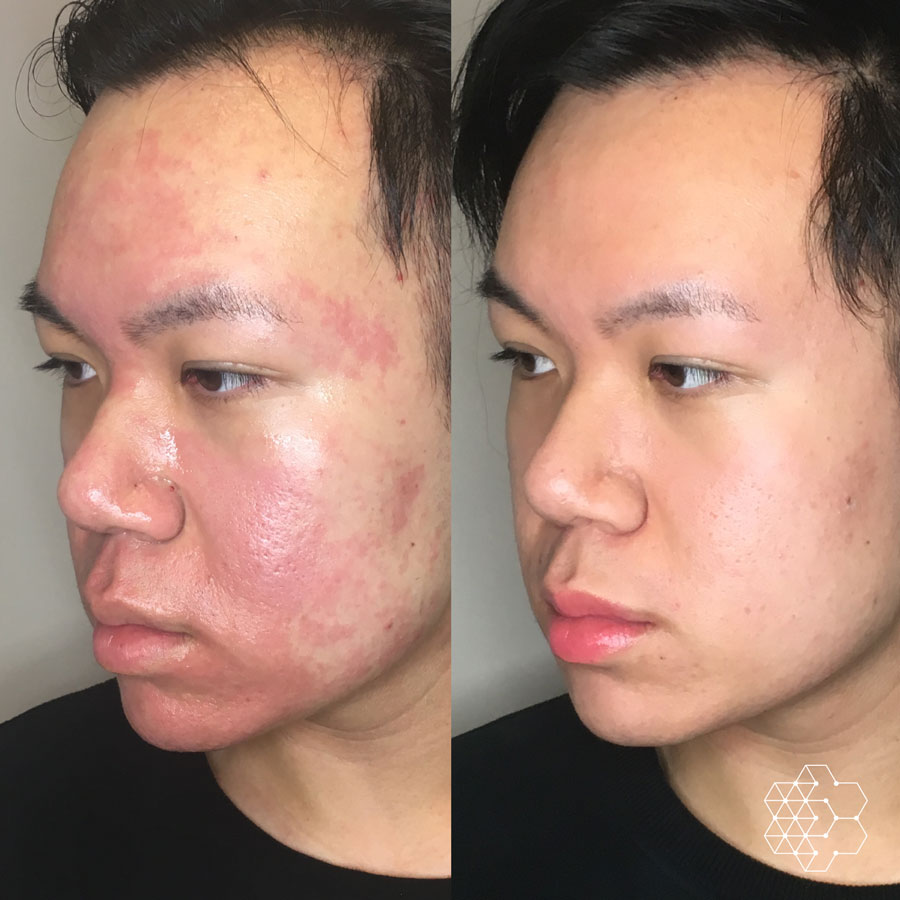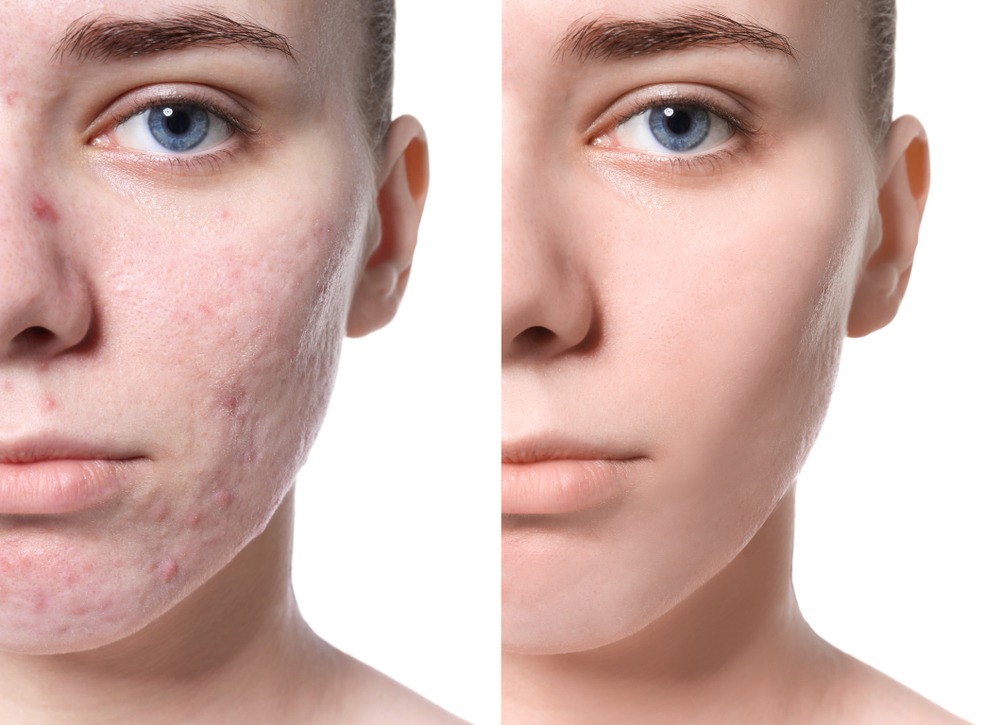Reliable Solutions for Acne Scars: How to Accomplish More Clear Skin
Reliable Solutions for Acne Scars: How to Accomplish More Clear Skin
Blog Article
Exploring Skin Disease: Recognizing and Dealing With Acne Scars for Healthier Skin
Acne marks stand for a considerable concern for individuals looking for to preserve healthy skin, as they can influence both appearance and self-worth. Understanding the various types of scars, from atrophic to hypertrophic, is essential for identifying proper therapy alternatives.
Recognizing Acne Scars

The body's all-natural healing process can cause either atrophic scars, which look like depressions in the skin, or hypertrophic marks, which are elevated and arise from overproduction of collagen. Additionally, the emotional toll of acne marks ought to not be underestimated; lots of people report sensations of humiliation, anxiousness, and lowered self-esteem. This psychological burden can affect social interactions and overall lifestyle.
Dealing with acne scars needs an extensive understanding of their development and effect. Awareness of the capacity for long-term effects associated with unattended marks can motivate individuals to seek proper treatments. Early treatment and efficient monitoring methods can dramatically improve skin look and improve psychological durability, highlighting the significance of recognizing the complexities bordering acne scars.
Kinds Of Acne Scars
Acne scars can be categorized into unique kinds, each displaying special characteristics and needing details treatment strategies. acne scars. The main types of acne scars include atrophic, hypertrophic, and keloid marks

Hypertrophic scars, in contrast, are increased over the skin level and are the outcome of excessive collagen manufacturing during the healing process. They usually remain within the limits of the original acne sore. Keloid scars are comparable yet expand beyond the original injury site, creating larger, elevated areas that can be scratchy or painful.
Understanding these types of marks is necessary for picking ideal therapy options. Different marks might respond far better to certain therapies, such as laser treatments, fillers, or surgical treatments, highlighting the value of a tailored method to acne mark management.
Determining Your Scars
When examining the look of your skin, it is important to precisely identify the sort of marks existing, as this will inform one of the most reliable treatment strategy. Acne marks generally fall under two categories: atrophic and hypertrophic marks. Atrophic scars, which are one of the most typical, appear as clinical depressions or impressions on the skin. These can additionally be identified into ice-pick scars, boxcar scars, and rolling marks, each displaying distinct characteristics and requiring various strategies for evaluation.
Hypertrophic scars, on the other hand, are elevated and happen due to excessive collagen production during the recovery process. Acknowledging the certain attributes of your marks-- such as deepness, size, and appearance-- is important for appropriate recognition (skin rejuvenation treatments). Furthermore, consider the distribution of scars throughout your skin, as this can suggest the extent and period of the acne problem
Involving with a skin doctor can offer beneficial insights right into the nature of your marks, aiding in the distinction in between various kinds. A detailed understanding of your marks will ultimately bring about a much more tailored and reliable treatment plan, ensuring a clearer and much healthier complexion.
Therapy Choices Readily Available
Identifying the details sort of acne marks existing on your skin lays the groundwork for useful site exploring effective therapy choices. Typical types of acne marks consist of atrophic (depressed), hypertrophic (raised), and post-inflammatory erythema.
For atrophic scars, choices such as chemical peels, microneedling, and laser resurfacing are extensively utilized. Chemical peels utilize acids to remove the external layer of skin, promoting brand-new cell development.
Hypertrophic scars can be treated with corticosteroid injections to squash the mark or laser treatment to decrease soreness and enhance look. Silicone gel sheets and pressure dressings may additionally aid in managing increased marks.
Furthermore, dermal fillers can briefly fill in clinical depressions from atrophic marks, while surgical excision might be proper for severe situations. Each therapy option has its considerations and advantages, making it necessary to talk to a skin doctor. They can supply personalized suggestions based upon the kind and extent of your marks, in addition to your skin type and general health.
Tips for Prevention
Efficient avoidance techniques can significantly lower the possibility of developing acne marks. The very first step is to maintain a constant skincare regimen that consists of gentle cleaning, peeling, and hydrating. Making use of non-comedogenic products assists stop clogged up pores, which can intensify acne. Additionally, integrating topical treatments having salicylic acid or benzoyl peroxide can efficiently lessen and handle breakouts swelling.
Preventing the impulse to pop or pick acne sores is essential, as this can result in deeper skin damages and raise the threat of scarring. Instead, consider check it out making use of a cool compress or over the counter therapies to minimize swelling and soreness.
Sunlight protection is another essential element of avoidance; ultraviolet (UV) rays can darken marks and impede the healing procedure. Using a broad-spectrum sun block with a minimum of SPF 30 daily can shield the skin and advertise even healing.
Last but not least, maintaining a balanced diet regimen abundant in vitamins, minerals, and anti-oxidants supports skin wellness and healing. Staying moisturized and handling anxiety degrees can additionally play a significant role in minimizing acne flare-ups. By applying these methods, individuals can dramatically lessen their opportunities of creating acne marks.
Final Thought
In conclusion, understanding and identifying acne scars is vital for reliable therapy and attaining healthier skin. Different kinds of acne scars, including atrophic and hypertrophic marks, require specific treatments customized to private requirements. Treatment alternatives variety from chemical peels and microneedling to corticosteroid injections, highlighting the value of seeking advice from a dermatologist. Furthermore, taking on a gentle skincare routine pop over to this web-site and protecting the skin from UV exposure can substantially contribute to the avoidance of more scarring and general skin wellness.
The body's all-natural healing procedure can result in either atrophic scars, which show up as clinical depressions in the skin, or hypertrophic marks, which are raised and result from overflow of collagen. They are additional divided right into three subtypes: ice pick marks, boxcar scars, and rolling marks. Acne scars typically drop into two groups: hypertrophic and atrophic marks. These can better be classified into ice-pick marks, boxcar marks, and rolling marks, each displaying distinctive features and calling for different techniques for analysis.
Numerous kinds of acne scars, including atrophic and hypertrophic scars, require specific treatments customized to individual requirements.
Report this page